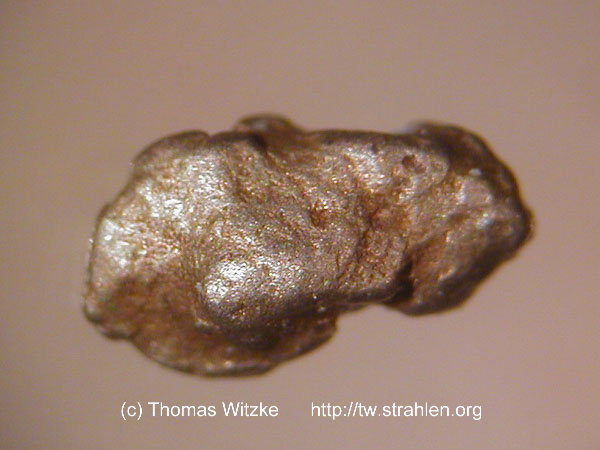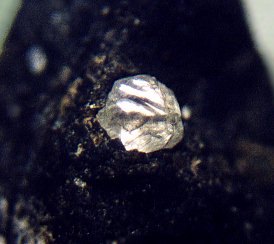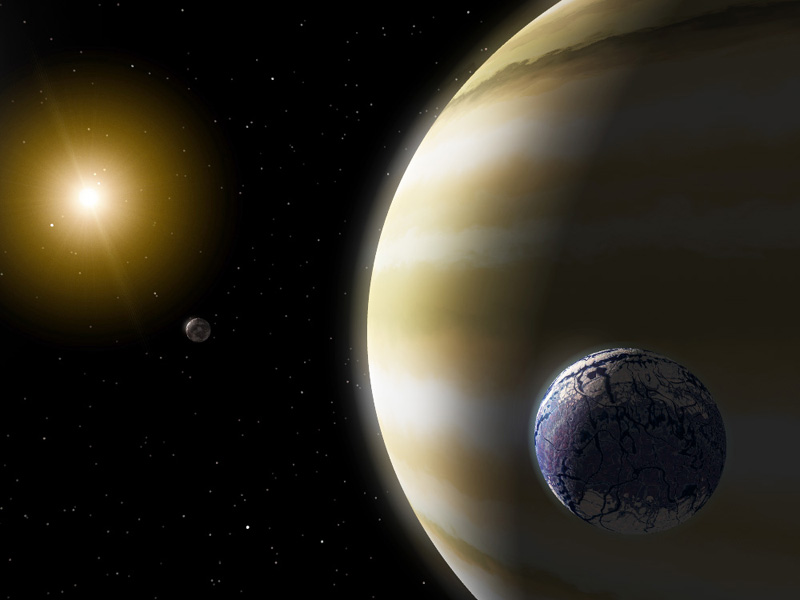
Wednesday, May 30, 2007
Atom Economy

Catalyst of the week! Palladium (Pd)

Palladium (Pd) has an atomic number of 46 and an atomic mass of 106.42. It's melting point is 1560 °C and it's boiling point is 2927 °C. Palladium, along with platinum, osmium, ruthenium, and rhodium form a group of elements referred to as the platinum group metals (PGM). Palladium is a lustrous silver-white metal. At ordinary temperatures it is strongly resistant to corrosion in air and to the action of acids. It forms many compounds and several complex salts. Palladium has a great ability to absorb hydrogen (up to 900 times its own volume).
When it is finely divided, palladium forms a good catalyst and is used to speed up hydrogenation and dehydrogenation reactions. Because of its corrosion resistance, a major use of palladium is in alloys used in low voltage electrical contacts. Palladium is used extensively in jewelry-making in certain alloys called “white gold.” It may be alloyed with platinum or substituted for it. It is used in watch bearings, springs, and balance wheels and also for mirrors in scientific instruments.
Palladium is nowadays more and more used in electrical appliances such as wide screen televisions, computers and mobile phones, in the form of tiny multi-layer ceramic capacitors, of which more than 400 billion are made each year.
For use in dentistry it is alloyed with silver, gold, and copper. Palladium salts are used in electroplating.
Most palladium is extracted as a by-product form nickel refining. It is found as the free metal associated with platinum and other platinum group metals in Australia, Brazil, Russia, Ethiopia, and North and South America, as well as with nickel and copper deposits (from which it is recovered commercially) in Canada and South Africa.
Palladium is regarded as of low toxicity, being poorly adsorbed by the body when ingested.
Palladium compounds are encountered relatively rarely by most people. All palladium compounds should be regarded as highly toxic and as carcinogenic.
Palladium has little environmental impact. It is present at low levels in some soils, and the leaves of trees have been found to contain 0.4 ppm. Some plants, such as the water hyacinth, are killed by low levels of palladium salts but most plants tolerate it.
Wednesday, May 23, 2007
Water Concepts
 It was neat to look at the site after having discussed many of the aspects of water in class. I think we did a good job of translating that 3D image into an understandable concept without having the 3D image to reinforce the idea. It was wonderful to have the opportunity to look at an image with a little more perspective. Showing the atoms lined up, with the polarity of the molecules turning them in a certain way.
It was neat to look at the site after having discussed many of the aspects of water in class. I think we did a good job of translating that 3D image into an understandable concept without having the 3D image to reinforce the idea. It was wonderful to have the opportunity to look at an image with a little more perspective. Showing the atoms lined up, with the polarity of the molecules turning them in a certain way.I tried looking at the QuickTime shows on the chemical structures and atomic orbitals, but it kept trying to get me to buy a CD, so I didn't really see anything on that site.
Carbon Structures

Iridium

Tuesday, May 15, 2007
Review if ATOMIC PROTERTIES MENU

I think what shook me had to do with unfamiliar terms, like moles (not furry rodents) and kilojoules per mole (even less to do with rodents). My brain wanted to tuck tail and run from such thought twisting concepts. Certain things led me to feel like I was getting it. Like, the talk about electrons further from the nucleus being easier to pull away. That made sense because distance can decrease the pull of the energy. That made sense to me, especially since there are those orbits between the outer layer and the nucleus which are neutralizing some of that pull with their own negative charge. It also made sense that an outer layer with two electrons would be easier to pull away than one. Each of those two electrons is having to share that orbital with each other, they don't wanna share, and then they repel each other. So, repelling each other and having that distance and shielding from the nucleus, that makes sense that they would be easier to pull away than the one by itself.
Right after that it started getting fuzzy. The concepts were lost on my poor brain and questions like: Why the drop between groups 5 and 6 (N-O and P-S)? failed to have any meaning for me at all. I think it was just too much at once. These ideas are a lot to take in, and I think that I need time in between to absorb info. Class was good, we read, we discussed, had q&a, and then moved on. Reading it straight through doesn't seem to work well for me. I want it explained in several different ways with pictures and examples and cartoons and anything else I can get.
Ozone, what do folks know?
Only one person talked about ozone outside of the stratosphere, and that was to discuss the strange sounding "ozone therapy". With a little investigation, I found that ozone therapy is being used in many different ways to handle many different ills. It is used to inject and infuse into people because it apparently increases the amount of antioxidants a person produces, it is also used as an antibacterial and anti fungal, an anti-a-lotta-stuff I guess. They are even selling ozone producing machines to have in your home so you can combat your many ills. That seems like a bad idea to me, people adding this unstable ozone, which we know to be toxic, into their homes for . . . ? It isn't clear EXACTLY what people are doing with all this ozone that they can make at home. Adding to the smog problem? Exposing themselves to a toxic gas? This whole idea is a little unsettling. None of the ads I saw said anything about ozone being toxic. It this incredibly irresponsible of the people creating and distributing these products?
Arsenic: My Element of the Week
As, having an atomic number of 33 and an atomic mass of 74.92160 . . . So that's 33 protons, 33 electrons and about 42-ish neutrons. Let's see if I can remember how to do this.
As = 1s22s22p63s23p63d104s24px14py14pz1
or
As = [Ar]3d104s24px14py14pz1
Okay, I think that's right.
So what else do we know about As? It's allotropic, which means that it can be the same molecules looking and maybe acting different depending on how those molecules are arranged. It can be yellow and soft, waxy, but only if the molecules are arranged as a tetrahedron. It can also be brittle and grey, metallic, when arranged another way, and much more dense. It's a little unstable and lends itself to converting and changing itself in many different ways. It is easily dissolved in water, and when dissolved becomes a powerful acid. It can be heated and turned into a gas, also easily. In addition to being used as a poison, it was also used as a stimulant and medicine. It resembles phosphorus, which is directly above As on the periodic table.
Over the years it has had a patchy reputation and has gone in and out of favor in it's different incarnations. Sometimes as a food additive, sometimes as a recreational drug or medicine. We all know of it as a poison, and it has been widely used as herbicides, pesticides, and insecticides. All in all, I can say that it seems to have many uses, and should be handled with respect and caution. After all, it is the Poison of Kings, and the King of Poisons.
Wednesday, May 9, 2007
Periodic Tables
I checked out the game that has you trying to match the symbol for the element they list. You can choose hard, medium, and easy. Surprisingly enough I got 10 out of 10 for the easy. The medium blew me away and I struggled with a 5/10 and the hard wasn't too bad and I got out of that with a 6/10. I mostly guessed.
Quiz
I obviously have no idea how to calculate the atomic weight of something and what the protons and electrons have to do with it. I have the faintest of foggy memories in which an instructor from long ago told me and explained how these things could be determined. It didn't stick.
Interactive
I should have looked at this one first. I got a reminder of how to read the periodic table, at least.
Quiz
1. Classify the following as either a chemical or physical change.
Burning wood - would be a chemical change, since it changes the chemical compounds
Crushing a rock - would be a physical change, because even in small pieces, it's still a rock
Dissolving sugar in water - my intuition was correct. I thought it was a physical change because mixing sugar and water gives you sugar water, not something new or different.
The rusting of iron - is a chemical change. The interaction between iron and water or whatever gives you a whole new thing, rust!
2. Classify the following as to whether or not they are pure substances or mixtures.
milk is a mixture of several things, water, fat, and sugars mostly
table salt I thought was pure, but table salt is mostly iodized and has anti caking agents
sugar I figured pure
steel I thought pure, and the answer said a homogeneous mixture of iron and carbon. I guess because it is a mixture that cannot be separated.
3. A cup of black coffee is considered to be __?__ and a/an __?__ substance.
(b) homogeneous…..impure I guessed homogeneous and impure because is is a mixture of coffee and water that cannot be separated
4. The boiling of water is considered to be a __?__ change and the temperature at which water boils is considered to be a __?__ property.
(d) physical…..physical The change of boiling water is a physical change since chemically, it hasn't changed. The temp at which water boils is a physical property, since it is not a chemical.
The Cultural Influence of Chemistry: Week 1
The way it looks to me, we don't have a very good understanding of the effects of natural disasters and global warming. It may have something to do with the fact that no one seems to be concerned with those effects until they're right on top of us. I suppose our understanding is increasing every day as a direct result of the effects showing up and making themselves available for study. We are able to see the life cycle of our food crops interrupted and affected by global warming and increased carbon dioxide and ozone. We can observe that the sea level is rising due to the melting of large masses of ice and we can watch as land is swallowed by the rising sea. We can see the currents changing due to that same influx of fresh water into the sea and how the difference in salt levels and temperatures are redirecting those currents, in turn changing the way our weather works. We will understand the effects as they occur and change the way our planet operates.
How do we find a balance between the needs of agriculture and the impact on our planet?
That question seems like asking a cat how to get to the grocery store. There is no quick fix, at least not at this point. There are waaaay too many people living beyond what they "need". How can you force that many people to change the way they live? And in time to repair damage and restore the planet to a state of health that can sustain our vast numbers? No, the amount of land and ocean that can produce sustainable food is not large enough, nor strong and healthy enough to feed the number of people living today. That whole 5% thing needs to be increased. People's huge lawns need to turn into their gardens that will feed their families and neighbors. Communities need to start taking care of their own food needs. Everyone needs to pitch in, in order for us to increase the amount of food produced without hugely increasing the amount of fuel used and over-taxation of soil and sea.
Should there be more effective control of the pharmaceutical industry?
That feels like a loaded question. There should be an "ethical" force which can watch and monitor the chemicals that are being sold to us as "safe" to ingest and generally be exposed to. At the same time, these companies and this FDA can also use these control measures to start making rules and laws about herbs and natural medicines. Vitamins, herbs, food . . . they're already trying to take those away from us using doctors and "approved medical personnel" as excuses to take our health care out of our own hands. Soon, getting your vitamin C or herbal throat drops are going to be items that have to be prescribed for you or found on the black market. I would love to say that yes, of course there should be some control over the pharmaceutical industry to make them responsible for the products they put out and deem "safe". I believe that things are not that simple and that when you start exerting control and making rules and restrictions, freedoms can start becoming a vulnerable grey area that people aren't afraid to take advantage of.
Tuesday, May 8, 2007
This is me

What can I say? You gotta do what's right. I always have a rough time describing myself. I try not to judge, I try to be open and to accept what is with clarity and a sense of purpose. I try not to yuck any ones yum. I try to be a good person and I think that most of the time I get it right. I'm in school studying TCM because I feel like it's the right thing to do and the best way to contribute to my community, family and friends. I'm from around here, a little south. Things are generally very, very good and I'm glad I'm around during these extreme and volatile times.